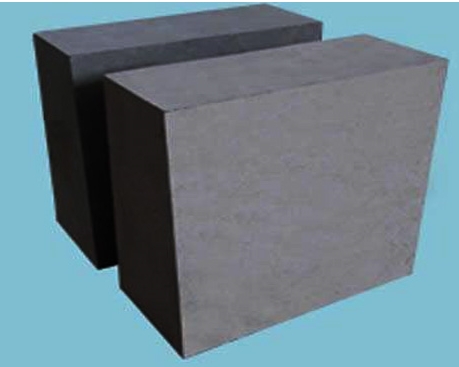- 28
- Sep
Phosphate wear-resistant brick
Phosphate wear-resistant brick

Phosphate-consolidated high-aluminum wear-resistant bricks are also called phosphate wear-resistant phosphate wear-resistant bricks. Phosphate wear-resistant bricks are a kind of refractory materials, which are high-quality bauxite clinker or dense phosphoric acid solution as the main raw material, or aluminum phosphate binder , After being pressed and formed by a dry machine, it is heat-treated at 400-600℃ to make chemically bonded refractory products. It is combined with the bricks. In order to avoid large shrinkage during the use of the product at high temperature, the ingredients usually need to introduce heating expansion raw materials, such as kyanite, sillimanite, pyrophyllite, and silicon carbide. Sintered with high alumina bricks and ceramics, the resistance to peeling is better, but the softening temperature is lower and corrosion resistance, so a small amount of fused corundum, mullite, etc. needs to be added to strengthen the matrix. Based on phosphoric acid and phosphoric acid resistant bricks, refractory bricks made of ordinary high alumina bricks through special technology and chemical additives have greatly improved abrasion resistance and load softening temperature, higher than high alumina bricks, good strength, rapid cooling and rapid heat resistance, Resistant to chemical corrosion and abrasion. Its appearance is higher than that of high alumina bricks in cement rotary kilns.
Technical performance:
(1) High temperature resistance performance is good, the refractory temperature is greater than 1770 degrees, can withstand relatively high temperatures, and fluctuations in high temperatures have no great impact.
(2) Very good thermal stability, resistance to rapid cold and rapid heat, and no delamination or peeling under temperature changes.
(3) Chemical resistance, no cracking and peeling will occur in a Co atmosphere at a temperature of 400-600°C.
(4) Good wear resistance and high compressive strength.
Phosphate bricks have been recognized as high-quality lining bricks for cement kilns and lime kilns.
There are two types of phosphate-bonded high alumina bricks: one is phosphate-bonded high-alumina bricks (referred to as phosphate bricks), and the other is phosphate-bonded high-alumina bricks (referred to as wear-resistant bricks).
Phosphate bricks use phosphoric acid solution with a concentration of 42.5% to 50% as the binder, and the aggregate is bauxite clinker calcined at a temperature above 1600°C in a rotary kiln. During the use of the brick, phosphoric acid reacts with the fine bauxite powder in the brick to react with the refractory clay, and finally forms a binder mainly composed of cristobalite aluminum orthophosphate. Wear-resistant bricks use industrial phosphoric acid and industrial aluminum hydroxide to prepare aluminum phosphate solution as a binder. Its molar ratio is Al2O3:P2O5=1:3.2. The aggregate used is the same as that of phosphate bricks. In the process of using bricks, like phosphate, a binder based on cristobalite-type aluminum orthophosphate is formed.
Phosphate bricks are suitable for the kiln mouth of the transition zone of rotary kilns and other parts where bricks are easy to fall off, and it is also advantageous for the firing zone. It is also used in mechanical shaft kilns, lime kilns, carbon industry rotary kilns, etc.
Product performance: It has the characteristics of high compressive strength at room temperature, good thermal shock stability, high load softening temperature, accurate dimensions, high volume density, and good wear resistance.
Physical and chemical indicators of phosphate bricks:
| project | index | |
| chemical composition(%) | AL203 | ≧75 |
| SiC | ≧8 | |
| Bulk density(g/cm3) | ≧2. 80 | |
| Refractoriness(°C) | ≧1790 | |
| Compressive strength at room temperature(MPa) | ≧70 | |
| 0. 2MPa Load softening start temperature
(T0. 6, °C) |
≧1500 | |
